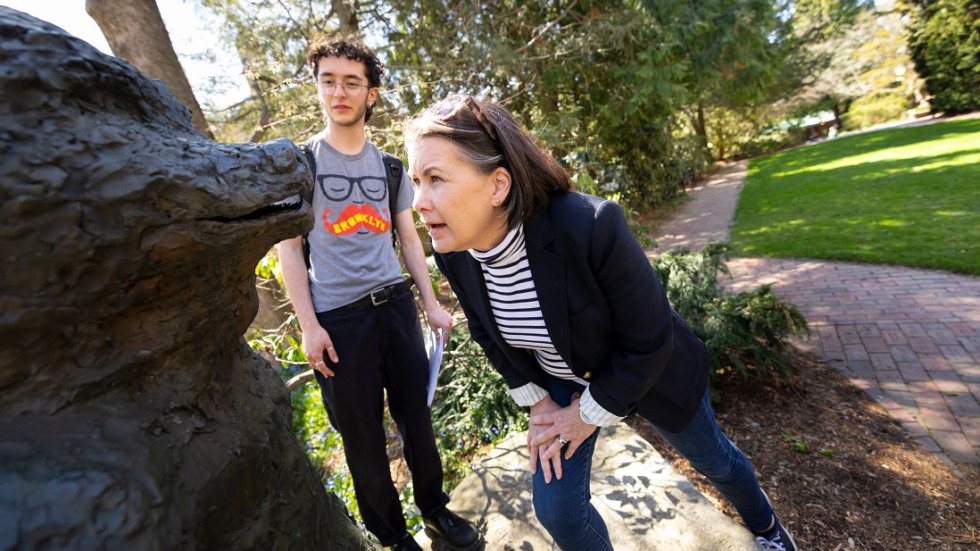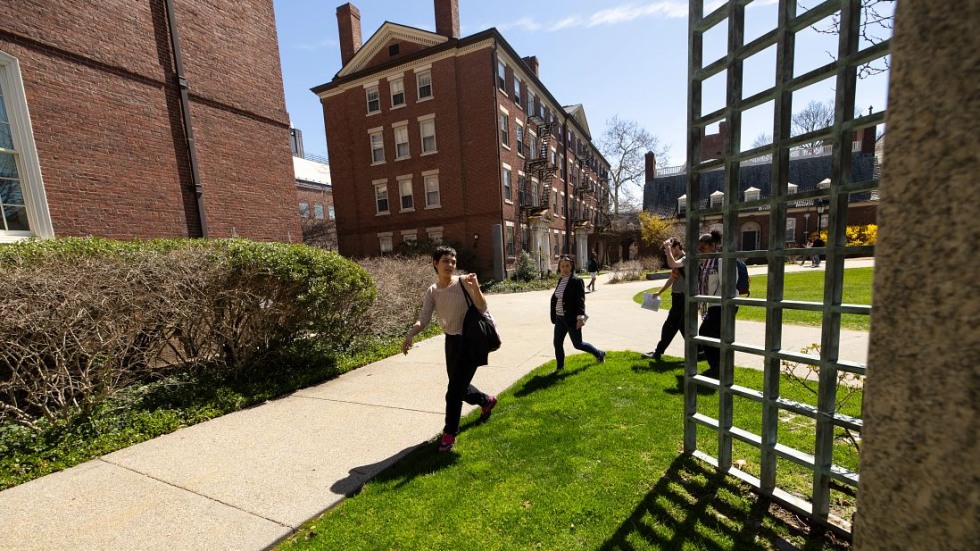PROVIDENCE, R.I. [Brown University] — On a recent Sunday afternoon, Brown sophomore Sofia Gonzalez stood in front of the iconic “Bronze Bruno” bear statue overlooking the University’s College Green and asked those gathered around her to shift their positions and consider the piece from a different perspective: the back.
After tour-goers admired the lifelike fur on the looming figure’s tail, Gonzalez pointed out an easily overlooked detail of the statue, by renowned sculptor Eli Harvey. According to an inscription at its base, it sits on a pedestal made from a piece of the slate Roger Williams landed on when he fled Plymouth Colony by canoe and arrived in Rhode Island in 1636.
The visit to the statue was part of a new student-led public art walking tours program, organized by the Brown Arts Institute to broaden access to and appreciation of the University’s ever-expanding collection of public art.
“By activating this collection with student-curated tours, we are promoting an understanding and appreciation of the rich cultural treasures that are part of Brown’s magnificent public art collection,” said Nicole Wholean, registrar and curator of campus collections, who leads the initiative.
The 40-minute tours are offered at 1 p.m. every Saturday and Sunday from April through November. Saturday tours meet at the sculpture “Bronze Bruno” on the College Green and Sunday tours meet at the sculpture “Circle Dance” on the Campus Walk. Admission is free and advance registration is not required.
True to Brown’s focus on student-centered learning and intellectual independence, each tour has been designed by one of the 15 student art interpreters, who personally curated a selection of highlighted works.
Gonzalez, for example, was drawn to “Bronze Bruno” and five other pieces of campus art, including Maya Lin’s granite water table of Narragansett Bay, called “Under the Laurentide,” and Tom Friedman’s joyful “Circle Dance” sculpture.
“I was excited to get involved as a tour guide because public art adds a lot of beauty to our shared spaces and also sparks a lot of creativity and imagination,” said Gonzalez, who is double concentrating in the history of art and architecture and international and public affairs. “It also allows me to get some hands-on experience in a field I may want to pursue in the future.”




